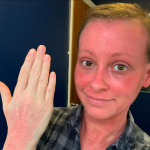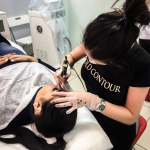The quest for sleek, perfectly straight hair has been a beauty staple for decades. Whether it’s to tame unruly waves or to shake up your style, straightening has the transformative power to overhaul your look with a stroke of heat or chemistry. In this comprehensive guide, we delve into the most effective ways to achieve that coveted straight hair, from innovative hot tools to natural straightening methods, always keeping your hair’s health in the forefront. So, if your goal is to achieve those silky, shiny, and straight locks safely and beautifully, you are in the right place. Let’s unfurl the secrets to styling success.
The Quest for Straight Hair: Exploring Your Options

Throughout history, fashion-forward individuals have sought to straighten their manes for a sleek look. Today, we have a medley of options at our disposal, and it’s essential to consider each one for its merits and effects on hair health. Straightening can range from temporary fixes for a night out to lasting treatments that redefine your hair’s natural texture. But what are your options, and how do they measure up? Let’s dive into the traditional irons, pioneering products, and natural alternatives that pave the way to pin-straight perfection.
Thermal Straightening: Tools and Techniques

The most popular method for achieving straight hair at home is thermal straightening, which typically involves tools like flat irons and blow dryers. But not all tools are created equal. The type of plate in your flat iron profoundly impacts its effectiveness and safety for your hair. Let’s look at the pros and cons:
| Type of Plate | Pros | Cons |
|---|---|---|
| Ceramic | Even heat distribution, less damaging | May wear out faster than other materials |
| Titanium | Fast heating, lightweight | Can cause more damage if not used properly |
| Tourmaline | Frizz-reducing negative ions | Usually more expensive |
When using any thermal tool, the key to minimizing potential harm to your locks is heat protection. A quality heat protectant should coat your hair, shielding it from temperatures that can strip its natural moisture and lead to breakage. To maintain the straight look, follow these steps:
- Apply a heat protectant spray generously.
- Use ceramic-coated tools to safeguard your strands.
- Select the lowest effective temperature setting for your hair type.
For blow-outs, a round brush can serve as your ally in smoothing those curls away, as tension and airflow work together to create a sleek finish. To ensure your efforts last, cool air can set the shape, and light hairspray can fend off frizz-inducing moisture from ruining your look.
Chemical Straightening Solutions
For those seeking longer-lasting solutions, chemical straightening treatments may pique your interest. From the traditional lye-based relaxers to the more modern keratin treatments, chemical processes can offer a more permanent straightening solution, albeit with more considerable commitment and care required. Keratin treatments, specifically, coat the hair shaft with a protein that naturally exists in your hair, offering not just straightening but also a semblance of repair and protection. Here’s what you need to consider before taking the plunge:
- Your hair’s current health and history with chemical processing.
- The potential for damage and how to mitigate it with protective treatments.
- The authenticity and safety of the products used — always aim for salon-grade quality.
While at-home kits for chemical straightening are available, they carry a degree of risk. Incorrect application or leaving the product on for too long can result in significant hair damage or even loss. It’s always wise to consult with a professional hairstylist before undergoing chemical treatments.
Natural and Gentle Hair Straightening Methods
Heat and chemicals aren’t for everyone. Some hair types are particularly delicate and require gentler care. Moreover, preference or lifestyle choices may steer you toward natural straightening methods. These methods are excellent for those with mild waves who wish to avoid heat or chemicals:
- Wrapping your hair around your head while it dries to pull curls flat.
- Rollers or large flexi-rods used on damp hair to create tension straightening.
- Natural straightening masks that use ingredients like milk and honey.
Aside from physical techniques, certain hair care products can aid in the straightening process. Look for creams and serums that tout smoothing and straightening properties. They can be particularly effective when used in combination with a consistent and gentle hair care routine, preparing your tresses for an easier and more effective styling process.
Maintaining Straight Hair: Post-Straightening Care
Now that you’ve achieved that sleek and straight look, it’s vital to understand how to maintain it. The first step involves a meticulous approach to washing and conditioning your hair. Never underestimate the value of a good wash routine tailored to straightened hair. Rich, hydrating conditioners will keep your hair supple and more manageable between styling sessions. Next, consider the lifecycle of your hair—the ends tend to show damage first, so regular trims are crucial to maintaining a neat appearance. Spraying on a lightweight oil or serum can help in containing frizz, especially in humid conditions.
As your hair grows, the roots will revert to their natural state. You can manage this through touch-ups or choose to embrace the volume at the roots. Ultimately, how you handle new growth is a matter of personal style preference and hair health considerations.
The Professional Touch: Salon Treatments for Straight Hair
There’s a palpable allure to salon-grade treatments that promise ideally straightened hair. With professional stylists wielding their tailored solutions, you can attain results that might be challenging to replicate at home. Here’s why many opt for the salon experience:
- Stylists can assess your hair and select the best treatment.
- The professional application ensures uniform coverage and minimizes the risk of damage.
- Salons have access to advanced treatments that may not be available on the consumer market.
The frequency of salon visits will depend on the treatment type and your hair’s growth rate. A professional consultation can help you plan out a manageable hair straightening regimen that aligns with your hair needs and lifestyle.
Innovations in Hair Straightening: What’s New and Exciting?
The haircare industry is forever evolving, pushing the boundaries with new ways to achieve that ideal straight look. Nanotechnology, for instance, is revolutionizing hair tools by improving heat distribution at a microscopic level, lessening the potential for damage. Expect to see smarter appliances that can assess hair health and adapt accordingly, offering personalized hair care experiences.
With these continual advancements, it’s an exciting time for anyone looking to straighten their hair. Tomorrow’s methods may yield even better results with less compromise on hair health, so keeping an eye on the latest developments is both wise and potentially rewarding.
Conclusion
In the myriad of ways to straighten your hair, there is no unequivocal best method—it comes down to your hair type, budget, and lifestyle. Whether you opt for the immediate results of heat stylers, the enduring effects of chemical treatments, or the gentler path of natural methods, the goal remains the same: achieving that smooth, straight look without compromising your hair’s integrity. It’s about finding the right balance between beauty and wellbeing. So take the time to explore, consult professionals, and ultimately, choose what resonates with your hair’s needs and your personal aesthetic vision.
FAQs
Q1: How often should I use a flat iron to avoid damaging my hair?
A1: Ideally, limit flat iron usage to two or three times a week, always with a heat protectant. This frequency allows your hair some downtime to recover from the heat exposure.
Q2: Can natural hair straightening methods give the same results as a flat iron?
A2: While results may vary, natural methods are safer and healthier but might not achieve the poker-straight look a flat iron can. They are more about reducing frizz and softening texture than ironing out every curl.
Q3: Are there any long-term side effects to chemically straightening my hair?
A3: Prolonged use of chemical treatments can weaken your hair, so it’s essential to follow up with conditioning treatments and give your hair a rest between processes.
Q4: Is it better to straighten clean or dirty hair?
A4: Ideally, you should straighten clean, dry hair to avoid damage and ensure even heat distribution. That said, some find that straightening one-day-old hair works better as the natural oils can protect against heat damage.
Q5: How can I keep my hair straight overnight?
A5: Use a silk pillowcase, wrap your hair, apply a light serum, and avoid moisture to keep hair straight. Loose braids can help manage hair overnight, preventing it from kinking or curling.


